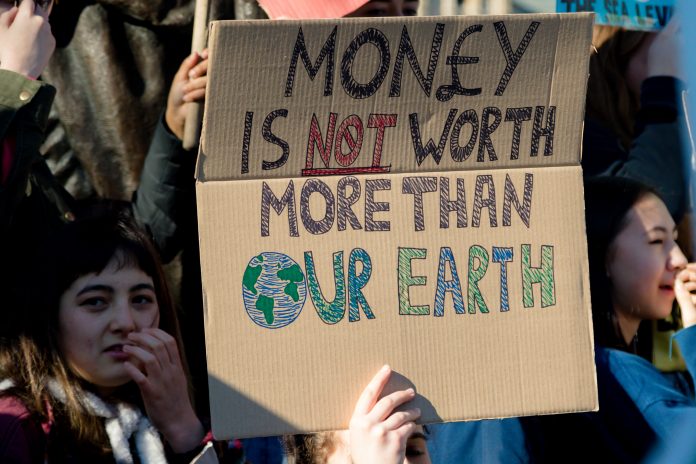Chris Bowden, Managing Director at Squeaky, outlines how the c-suite can walk-the-walk on climate change and the challenges leaders are facing in the race to net-zero
Sustainability professionals have long encountered a mixed response from the c-suite when it comes to acting on environmental, social and governance (ESG) issues. Thankfully, however, the denial level amongst the c-suite on perhaps the greatest challenge of our time, climate change, has shrunk considerably and sustainability is now firmly on the boardroom agenda.
C-suite sustainability champions in 2020
Pandemic aside, 2020 gave us much to celebrate as big business awoke to the benefit of addressing climate change head-on. 2020 was probably a turning point in the climate change movement as more companies across the world committed to decarbonisation. This is a victory many years in the making. In recent years, the commitment from business leaders to “do well by doing good” has increased substantially – by way of example, at least one fifth (21%) of the world’s 2,000 largest public companies have committed to meet net-zero targets, according to a new report called ‘Taking Stock: A global assessment of net-zero targets.’ The companies together represent sales of nearly $14 trillion.
As well as it being the ethical and moral thing to do, core to this shift is the overwhelming weight of accumulated research which has found that companies who pay attention to ESG concerns increase the potential for value creation in respect to top-line growth, cost reductions, reduced regulatory and legal interventions, employee productivity uplift and investment, and asset optimisation.
In April, the UK Government announced it will be setting the world’s most ambitious climate change target in law – cutting emissions by 78% by 2035, compared to 1990 levels. There is no doubt, the UK has raised the bar on tackling climate change. Meeting this new target will require business leaders to stand strong under huge pressure and face the challenge head-on.
The conflicting interests of the ESG agenda
Whilst many executive leaders now take ESG seriously in their decision making, many are managing conflict with board members who are blinkered by the lure of short-term results and are bound to the belief that companies who focus on ESG issues experience a drag on value creation. Worryingly, PWC’s 2020 Annual Corporate Directors Survey found that only 38% of board members think ESG issues have a financial impact on a company.
But archaic board-level thinking is not the only challenge on the race to net zero. Too many companies have embraced a “box-ticking” culture that encourages the adoption of increasingly standardised ESG activities. Token programmes and unclear claims will not only erode public trust and invite backlash against a company and its executives, but they will also impede the combined effort needed on the Race to Zero.
The catalysts of change
Arguably the biggest catalyst to make companies more sustainable, inclusive, and socially responsible is the reform of capitalism. To say capitalism has been a powerful movement is not justice enough. Study upon study has noted that today, consumers will spend their money with brands who align with their moral beliefs, and if they don’t, there’s little public hesitation in snubbing companies who people believe are not pulling their weight. Silence is no longer an option in the marketplace of authenticity and experience.
Plus, the failure of political systems and governments to lead efforts to curb climate change – no less than when Donald Trump pulled the USA out of the Paris Climate Agreement in 2016 – has created an opportunity for brands to step up, connect with consumers, and take the lead in an unprecedented way. It is a shift that has led many businesses to move beyond passive activity – like signing petitions – to build strong alliances, policy and activism, aligning on science-based commitments towards sustainability.
And it’s not just consumers who’ve acted as a motivational force either. Employees are pushing the companies they work for to follow a moral imperative rather than a silent one and will punish those who fail to speak out by taking their talent elsewhere.
Millennial consumers and employees have, undoubtedly, driven the maturity of the ESG movement in capital markets and financial services, too. The latest data from Refinitiv, for example, shows that ESG bond volumes have reached a record high. Elsewhere, investment manager, Fidelity International, has highlighted that in the first three quarters of 2020, stock with higher ESG ratings improved returns in every months save for April.
The tools for change are at our fingertips
Companies have always needed to amend their strategies to respond to market conditions, but climate change is a different beast because the timescales of the most harmful impacts are far beyond most strategic plans. What the world has learnt from a year in a pandemic is that it is entirely possible to collaborate to make instant change. So, not only did the lockdown trigger the largest ever fall in carbon emissions, but it has also left us safe in the knowledge that businesses can create new working models, at speed. Excuses are now futile.
Plus, the positive news is that the technology, creative collaborative thinking, and affordability exists to reach net zero. The question is, how can the c-suite set their company up to reach net zero, contribute to the bigger goal of limiting global warming and, ultimately, limit further impact of the climate disaster?
-
Power your business with genuinely clean energy
Renewable energy has a dirty secret. It is often presented as entirely positive. However, ‘renewable’ is not always the same thing as energy from non-polluting, sustainable or carbon-neutral sources. In fact, many energy providers use ‘renewable’ to describe energy from ‘dirty’ sources including biomass, which involves burning wood or waste and releasing both solid carbon particles and greenhouse gases like carbon dioxide (CO2) into the atmosphere.
While none of the ‘renewable’ energy providers have been deceitful necessarily, some are not entirely clear about their sources. This means making informed decisions can be harder for customers.
Energy is the foundation of any business, and if you are serious about reaching net-zero, it is that businesses responsibility to power its people with energy that has no adverse impact on the environment. This means reduced or no carbon emissions, and no high-level radioactive waste emissions.
-
Identify and overcome paralysing misconceptions
One of the biggest misconceptions out there is the belief that a mission or purpose that embeds ESG commitments costs more. Prioritising ESG doesn’t have to cost the earth – indeed robust actions and transparent behaviours can be adopted with little cost, and yet the value add can be exponential. The key here is to set the record straight amongst the c-suite community, busting any of those long-standing myths, so that they can prioritise ESG commitments.
-
Prioritise innovation
When it comes to sustainability, one of the biggest tech developments is the capacity to create, capture and transmit data. Learning and acting on this data is a critical feature of the sustainability agenda. The reason is that advanced analytics supply businesses and organisations with insight into how efficient they are, ultimately helping to pinpoint opportunities to reduce environmental impact.
Artificial intelligence (AI) and Robotic Process Automation (RPA) developments are also making a significant contribution to the sustainability agenda, helping optimise operation efficiency and process accuracy.
But innovation is not just about data. Businesses must innovate their thinking too. They need to be open to and commit to collaborating in green finance, invest in clean technology and use their powerful voices to back social movements that call for positive change. And it’s the c-suite who must lead this charge.
-
Role model green behaviours
Companies that are serious about becoming more sustainable, inclusive, and socially responsible must consider ways to embed these objectives into the organisation and start initiating behavioural change right away. Most successful companies have a mission statement and a purpose, so one way to start would be to consider whether these statements align with their ESG goals. Another route is to become a B-Corp, a for-profit company, which commits to creating a positive impact on society and the environment through its operations. It is worth noting that recertifying UK B Corps (B Corps must recertify every two years) reported an average growth rate of 14%, 28 times higher than the national average of 0.5%.
Without a doubt, organisations that fall short on the sustainability agenda will fail to function in the tough realities of the years ahead. Business chiefs must live and breathe sustainability. As Mark Carney has previously stated, “Firms that align their business models to the transition to a carbon-neutral world will be rewarded handsomely; those that fail to adapt will cease to exist.” Unless green-thinking and action runs through the veins of business, we will fail to prevent the catastrophic uncoiling of climate change. Titans of business may exist as a small collective, but remember, positive change has always been driven by the movement of the minority.
-
Act now through carbon offsetting
Reaching net-zero requires momentous abatement of greenhouse gas emissions across all sectors of the economy. Certainly, offsetting alone will not tackle climate change and it cannot be treated as a silver bullet. However, as experts around the world agree and as science proves, it is an essential part of our journey to net-zero and most companies will not be able to reach net-zero without it. Not matter how much an individual or business reduces, there will always be stubborn or hard to address residual emissions.
We need to move to a low-carbon world as quickly as possible. But even in the best-case scenario, this transition will take time. As such, while we work on reducing our emissions (often involving long term systemic changes to decarbonise existing business models), we need to do something about the carbon emissions we are producing today. Funding an equivalent amount of carbon emissions reductions through voluntary carbon offsetting is an effective way to take responsibility for this carbon footprint and buys us time while we develop new processes and technology to reduce it.











